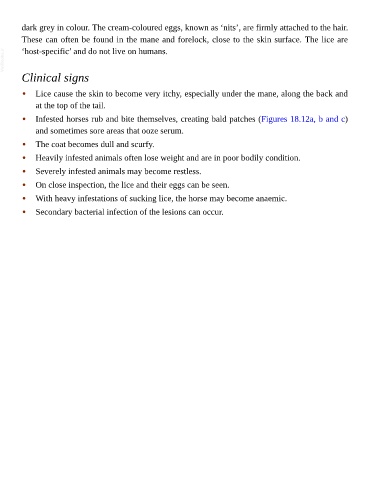Page 840 - The Veterinary Care of the Horse
P. 840
dark grey in colour. The cream-coloured eggs, known as ‘nits’, are firmly attached to the hair.
These can often be found in the mane and forelock, close to the skin surface. The lice are
VetBooks.ir ‘host-specific’ and do not live on humans.
Clinical signs
• Lice cause the skin to become very itchy, especially under the mane, along the back and
at the top of the tail.
• Infested horses rub and bite themselves, creating bald patches (Figures 18.12a, b and c)
and sometimes sore areas that ooze serum.
• The coat becomes dull and scurfy.
• Heavily infested animals often lose weight and are in poor bodily condition.
• Severely infested animals may become restless.
• On close inspection, the lice and their eggs can be seen.
• With heavy infestations of sucking lice, the horse may become anaemic.
• Secondary bacterial infection of the lesions can occur.

